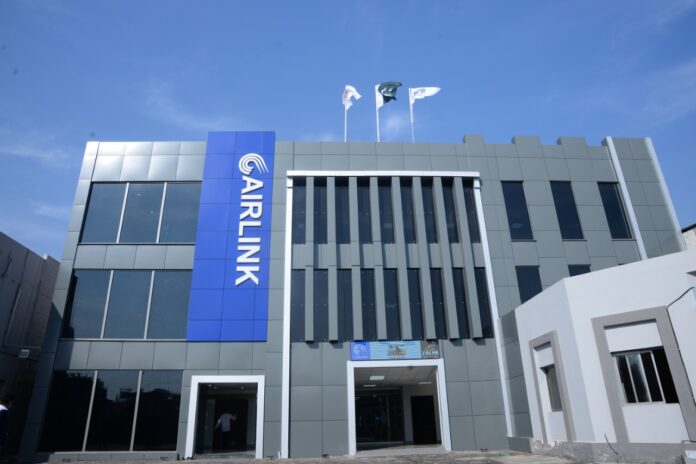LAHORE: Air Link Communication released its financials for Q3FY23 to the Pakistan Stock Exchange (PSX) on 27 April. The company’s earnings for both Q3FY23 and 9MFY23 collapsed to less than half on a quarter-on-quarter (QoQ) and year-on-year (YoY) basis, respectively. The company ended the quarter with a profit of Rs 163 million for a 9MFY23 earning of Rs 955 million.
What is Air Link Communication?
Air Link Communication Limited is a leading distributor and manufacturer of mobile phones in Pakistan. The company has service centres throughout the country and manufactures and distributes popular Android brands such as Huawei, TCL, Tecno, Itel, Realme and Xiaomi. Additionally, Air Link Communication Limited has an agreement wit h the Apple Authorised Distributor for Pakistan to distribute Apple products. It also distributes Samsung products. The company was incorporated in 2014 but did not become active until 2018. In 2019, Air Link Communication Limited was converted into a public limited company and was listed on the Pakistan Stock Exchange.
Q3FY23 earnings
The company’s revenue fell to Rs 8.28 billion from Q2FY23’s Rs 13.8 billion and Q3FY22’s Rs 11.24 billion, representing a QoQ decline of 40.2% and a YoY decline of 26.26%, respectively. The company’s cost of goods sold (COGS) fell from last quarter’s Rs 12.745 billion to Rs 7.4 billion, for a QoQ decline of 41.28%. At Rs 7.4 billion, the COGS also represents a 25.1% YoY decline. COGS as a percentage of revenue improved from 91.89% in Q2FY23 to the current 90.29%. This still pales in comparison to the 88.88% figure that Air Link obtained in Q3FY22.
The company’s gross profit clocked in at Rs 804.9 million for a QoQ decline of 28.43%, and a YoY decline of 35.59%. The company’s gross profit margin (GPM) improved from last quarter’s 8.11% to the current 9.71%. This, however, is still a downgrade from last year’s GPM of 11.12%. The company’s operating profit margin (OPM) fared similarly, clocking in at 6.28% against last quarter’s 5.43%, and last year’s 7.31%.
Other notable changes include the astronomical increase in the company’s other income. At Rs 116.7 million, Air Link’s other income rose by 47.56% QoQ and by an astonishing 4742.83% YoY. The company’s tax expense rose by Rs 224 million or by 124.6% to Rs 44.24 million from last quarter’s rebate of Rs 179.84 million. The current tax expense is, however, still lower by 82.41% YoY from last year’s Rs 207.3 million. The company’s effective tax rate (ETR) clocked in at 21.3% against last quarter’s negative ETR of -73.2%, and last year’s ETR of 82.41%.
Air Link ended the quarter with a final profit of Rs 163.516 million, representing a QoQ decline of 61.57% from the previous Rs 425.5 million and a YoY decline of 50.45% from the corresponding Rs 330 million figure from last year’s quarter results. Its net profit margin (NPM) clocked in at 1.97% for the quarter against last quarter’s figure of 3.07%, and last year’s figure of 2.94%.
9MFY23 earnings
The company’s revenue fell YoY by 10% from Rs 35.43 billion to Rs 31.57 billion, while COGS fell by 9.05% in comparison from Rs 31.5 billion to Rs 28.7 billion. COGS as a percentage of revenue worsened YoY from 89.18% to 91%. This is reflected in Air Link’s GPM, which fell from 9MFY22’s 10.82% to the current 9%. Gross profit as a whole contracted by 25.89% YoY from Rs 3.8 billion to Rs 2.8 billion.
Operating profit fell by 30.37% YoY from Rs 2.68 billion to Rs 1.869 billion, while OPM fell from 7.58% to 5.92%. The company’s other income spiked by a whopping 946.57% YoY from Rs 20.5 million to Rs 215.3 million. The company’s tax expense fell by Rs 854.4 million for a rebate of Rs 285.19 million, while its ETR clocked in at a negative 42.56% to reflect the rebate against 9MFY22’s ETR of 29.59%.
Final net profit clocked in at Rs 955.29 million with an NPM of 3.03%, against last year’s Rs 1.354 billion and NPM of 3.82%.
What’s the verdict?
“The absence of letters of credit (LC) resulted in a shortage of inventory, preventing them from operating at full capacity. This inventory deficit, combined with fixed costs, caused a decline in their profit margins,” explains Yousuf Farooq, Director of Research at Topline Securities.
“It’s astonishing that they managed to generate any revenue at all given their limited access to LCs. Considering it’s a processing business facing a scarcity of raw materials, the numbers are impressive. Once the LC issue is resolved, their margins will naturally increase due to the depreciation of the Rupee,” Farooq elaborates.
























